Filipino Pork Sisig- Spicy Pork Appetizer
As an Amazon Associate and member of other affiliate programs, I earn from qualifying purchases.
This Filipino Pork Sisig is a sizzling, spicy appetizer that’s a favorite starter to any meal. I cooked this pork dish three times, in three different ways as inspired by the recipe of my good friend, Chef and Artist Claude Tayag, who with his charming wife, Mary Ann once hosted Anthony Bourdain in their Philippine home. Yes, that Bourdain. But I digress.
What is Pork Sisig? Pronounced “see-seeg”, it is a dish of the pork cheeks, snout and ears. “They are chopped up using two cleavers, chopping with both hands in a rhythmic fashion, then deep fried and sprinkled with lemon juice, vinegar and chopped chiles.” (As defined in “Memories of Philippine Kitchens” by Amy Besa and Romy Dorotan).
Sisig is a dish that originated in Pampanga, a province north of Manila and considered the “Culinary Capital of the Philippines”. There are various versions of this pork appetizer in this parts, and there is an annual “Sisig Competition” held in Pampanga. This region is right next to my own home province, Tarlac where I grew up. When I visited early this year, I enjoyed a nice Sunday lunch at Claude & Mary Ann’s “Bale Dutung” where they served pork sisig, one of the dishes from their multi entrees of pork “Lechon Served 5 Ways”.
My late dad and his brothers used to enjoy a round of beer and this type of appetizers before a sumptuous meal. Important family decisions were made over a round of sisig and beer back then. The memory of those days came back to me when I was pre-marinating my own sisig and the citrusy aroma of calamansi, the tartness of vinegar mixed in with the chopped onions and roasted pork floated in the bowl. It was sheer “sisig” heaven!
We love our family celebrations. But we love the food we serve with it even more. This is what a typical American Thanksgiving is like in a Filipino home here in America. Food is a journey from the appetizers to the end of the meal, and desserts are as scrumptious as the entrees. The chilly air fills the outdoors. But inside the house, music, laughter and chatter is loud and lively.
A huge steaming cauldron of steamed white jasmine rice is always ready to accompany the plethora of dishes – both Filipino and American food mingling in a magnificent feast for all to share. The roast turkey is never lonely, there are platters of Filipino food served right next to it. And after saying grace in gratitude for all our blessings, we dig in. And we start with an appetizer that explodes, just like this spicy Pork Sisig!
Filipino Pork Sisig - Spicy Pork Appetizer
Ingredients
- 1 pound whole pork belly
- 1 whole medium chopped white onion
- 1 whole medium sliced, for garnish red onion
- 6 cups water for boiling pork
- 1 cup canned pineapple juice
- 1/2 Tablespoon salt
- 1/2 Tablespoon black peppercorns
- 2 Tablespoons (frozen/ unsweetened from Asian markets) or use Lemon juice Calamansi juice
- 1/4 cup white vinegar
- a pinch to taste salt
- 1 teaspoon black pepper powder
- 1 teaspoon minced garlic
- 2 small pieces sliced (from Asian markets) red chilies (or
- 1/2 cup of sliced for garnish green onions or scallions
Instructions
- In a 6-quart stockpot, place water, pineapple juice, salt, peppercorns, garlic and pork belly. Bring to a boil on medium-high heat then lower to heat to a low simmer. Continue to cook till pork is tender over medium- low heat, about an hour for a pound of pork.
- When cooked and tender, remove the pork from the stockpot. Drain and discard the liquid.
- Place the pre-boiled pork belly piece on a baking pan and oven roast till top is crisp. You are about to make a slab of "Lechon sa Hurno", roast pork belly. Cooking time should be 30 minutes for every pound at a preheated oven of 375 F degrees.(This pork belly I had was a pound which took 30 minutes to roast and the skin on top was crispy).
- Once pork is crisp and brown, remove from the oven and let it sit on a the counter for 15 minutes. Then chop the pork into tiny small cubes almost like a hash. Place the chopped pork in a non-reactive bowl.
- Into the pork pieces, mix in the calamansi (or lemon juice), chopped onions, white vinegar, salt, pepper and the red chilies.
- Just before serving, heat a medium sized skillet over medium high heat. Add the vegetable oil. When skillet and oil are hot enough after 1 to 2 minutes, add the pork mixture. This will be the third cooking stage. Stir fry the meat around the skillet till it turns browned and gets an added crunch. This should take 2 to 3 minutes.
- Serve the “sisig” hot on a sizzling skillet or steak platter, with sliced lemons and chopped red chilies on the side. Garnish with chopped scallions and sliced red onions.
- COOK’S COMMENTS: Chef Claude Tayag suggested to cut the meat as small as possible. In the original recipe, he used a Lechon Pig’s head and cheeks for the meat and added chicken livers to thicken the sauce. You can cook this Pork Sisig from Lechon leftovers, after a party. When these pork cuts from lechon are not available, I always resort to pork belly which makes the dish just as delicious and authentic as the “sisig” I remembered from childhood.
- Important Tip: When handling or slicing the red chilies, be careful not to rub your eyes or skin after touching the chili pieces or it will sting you. When I cook this and there are children who will eat the sisig, I lower the spicy level by serving the chilies on the side.
- Ingredient availability: Calamansi, the Filipino lime is an important flavor to this pork dish. It provides a piercing sweet citrusy flavor and aroma that's lime-like and unforgettable. Here in the States, access to the Calamansi is easier in the west coast or warmer states where trees can grow abundantly, like they do in the Philippines. But where I live in the USA east coast, it is available in Chinatown, usually at a steep price. Since I don't have easy access to the fresh Calamansi, I buy the frozen unsweetened concentrate, from Asian groceries. It is a good substitute and worked well for this Pork Sisig. But if all else fails, reach for fresh lemon juice, which works wonderfully, too.
- *Hello, Friends! Please DO NOT LIFT OR PLAGIARIZE my original recipe. All the images and content on this blog are COPYRIGHT PROTECTED and owned by my media company Besa-Quirino LLC. This means BY LAW you are NOT allowed to copy, scrape, lift, frame, plagiarize or use my photos and recipe content I wrote, on your website,books, films, television shows or videos without my permission. If you want to republish this recipe or content on another website, video, news article,or media outlets mentioned above please ASK my permission, re-write it in your own words and simply link back to this blog to give proper attribution. It’s the legal thing to do. Thank you. Email me at [email protected]
- Disclosure: As a participant in the Amazon Affiliate program, some blog posts contain links to products used in the recipe and sold on Amazon. The price stays the same for the readers who wish to purchase these products on my links. I earn a small commission from Amazon which helps maintain the blog expenses. Thanks in advance for your support.

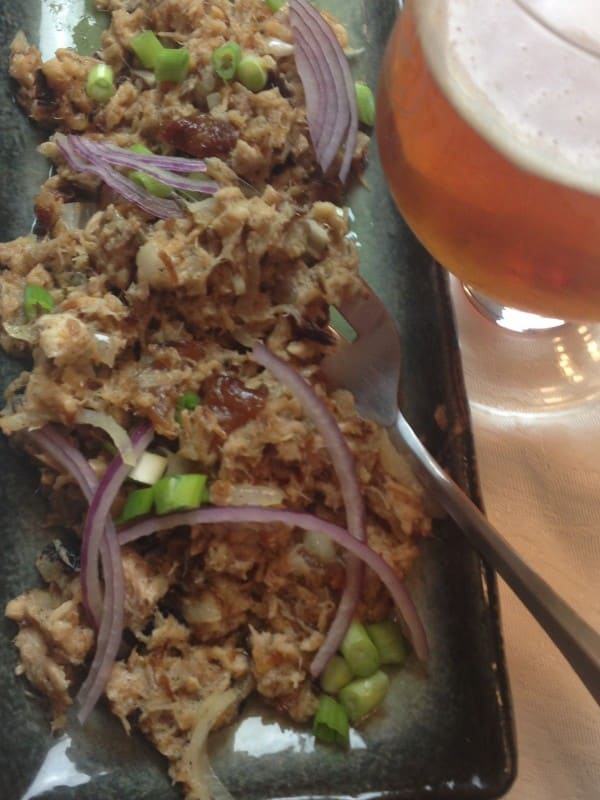
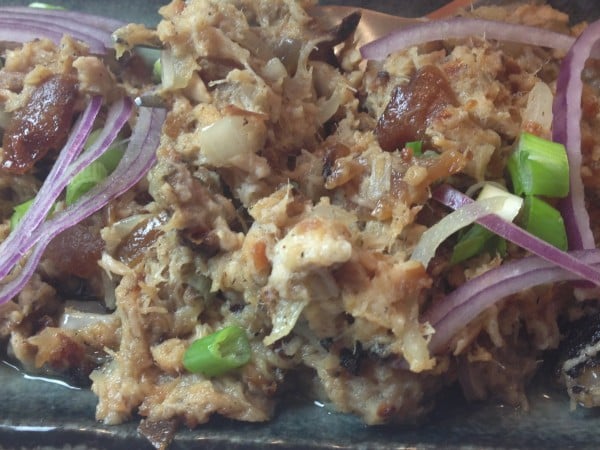
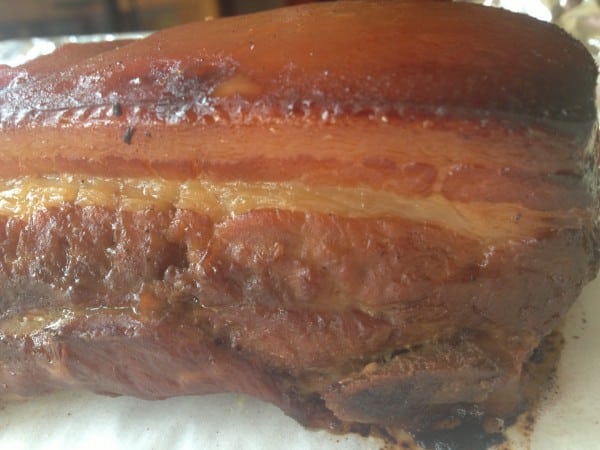
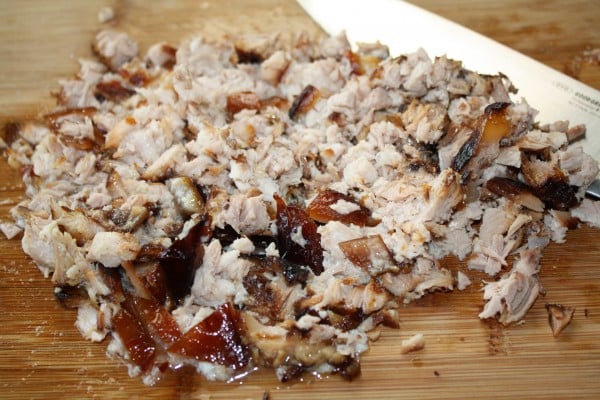
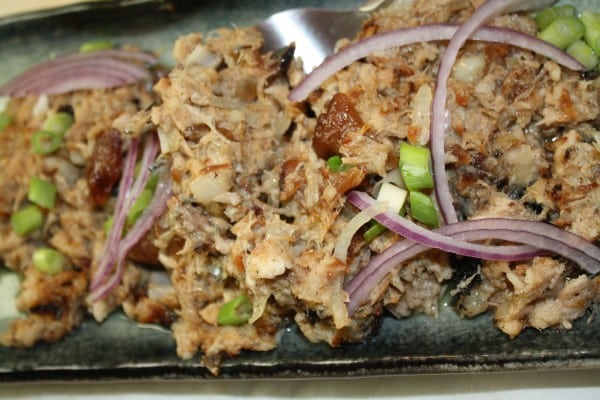




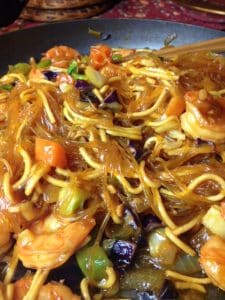



your sisig looks so juicy and delicious …. just the way sisig should be …. I saw the Bourdain episode when he went to “Bale Dutung” … memorable moment for us Kapampangan foodies 🙂
Hi Boyet, thanks for the kind comments. It means a lot to me when fellow Filipino foodies come visit my blog and appreciate the dishes I share. Yes, that Bourdain episode was fantastic & made us all so proud, didn’t it? Thanks for coming by!
Thanks for sharing a thoughtful post and recipe. It really gets nostalgic as you prepare this home-grown dishes, good memories just flood your head.
Kudos and more power!!
Hi Chef Ulam! So honored you came by. I’m grateful for your kind comments. Yes, I got nostalgic, too when I was mixing in the calamansi and all the aromas brought back a rush of wonderful memories. Happy Thanksgiving & thanks for the follow & blog visit!
cheeks snout and ears? O.O
I think so I ll go for the belly gladly. ^.^
Thanks, Helene. The original recipe for this appetizer comes from the “Lechon” roast pig. Filipinos like to make use of every part and make a dish out of it – from soups, sides, appetizers and all. I have tried all ways. You can use pork belly for this if it’s more convenient. Thanks for the blog-visit!
Love the succulence of your sisig because some of the sisig I’ve had before were dry. Not, sure about me eating this as appetizer. It will be more of a meal with rice on the side, hehe. Happy Thanksgiving to you and your loved ones, Elizabeth!
~ ray ~
Hi Chef Ray, agree with you ~ must eat this with rice, lots of it and have the red chilies/siling labuyo on the side ready. My husband said last night he needs to “buy more beer” after he saw how much Sisig I made. Thanks for the blog-visit and all your support. Happy Thanksgiving to you and your family:-)
I will go straight to the sisig platter before passing by the turkey, definitely! Your sisig looks really delicious I like it juicy this way with raw onions.
Happy Thanksgiving!
Thanks, Iska! Agree with you & even might try to outrun you straight to the sisig platter. I remember this dish well from when my late dad used to enjoy it with his San Miguel beer. The aromas from the calamansi, siling labuyo and vinegar brought it all back. Thanks for visiting!
I love the looks of your Sisig, Beth! Specially with the onions!! Extra rice, please!
Thanks, Peachy! You’re right the red onions made it even more zesty! And I agree ~ lots of rice will be great,too! Thanks for the blog-visit!
I’m drooling over your delicious pork belly block. That looks so juicy and delicious!!! What a nice appetizer to start a meal… if this comes up at the beginning of the meal, I will get excited to eat main dishes!! Very impressive appetizer dish!
Thanks, Nami! This Pork Sisig is a favorite appetizer on the Filipino menu. The spicier it is, the better. It’s good with chilled beer. So nice of you to shower me with so many compliments 🙂
Betty-Ann, your recipe makes sisig seem so simple. I will make this for New Years Eve, and go back to my vegan ways (and out of my fat pants) in 2013.
Thanks, Marla! So nice of you to say that my sisig is easy. Do indulge and enjoy it with your family. That’s what the holidays are for. Thanks for your kindness and support. What a treat to have you visit today 🙂 Happy New Year!
Thanks for the copy of this recipe
Hi Bernadette! Glad you liked the post 🙂